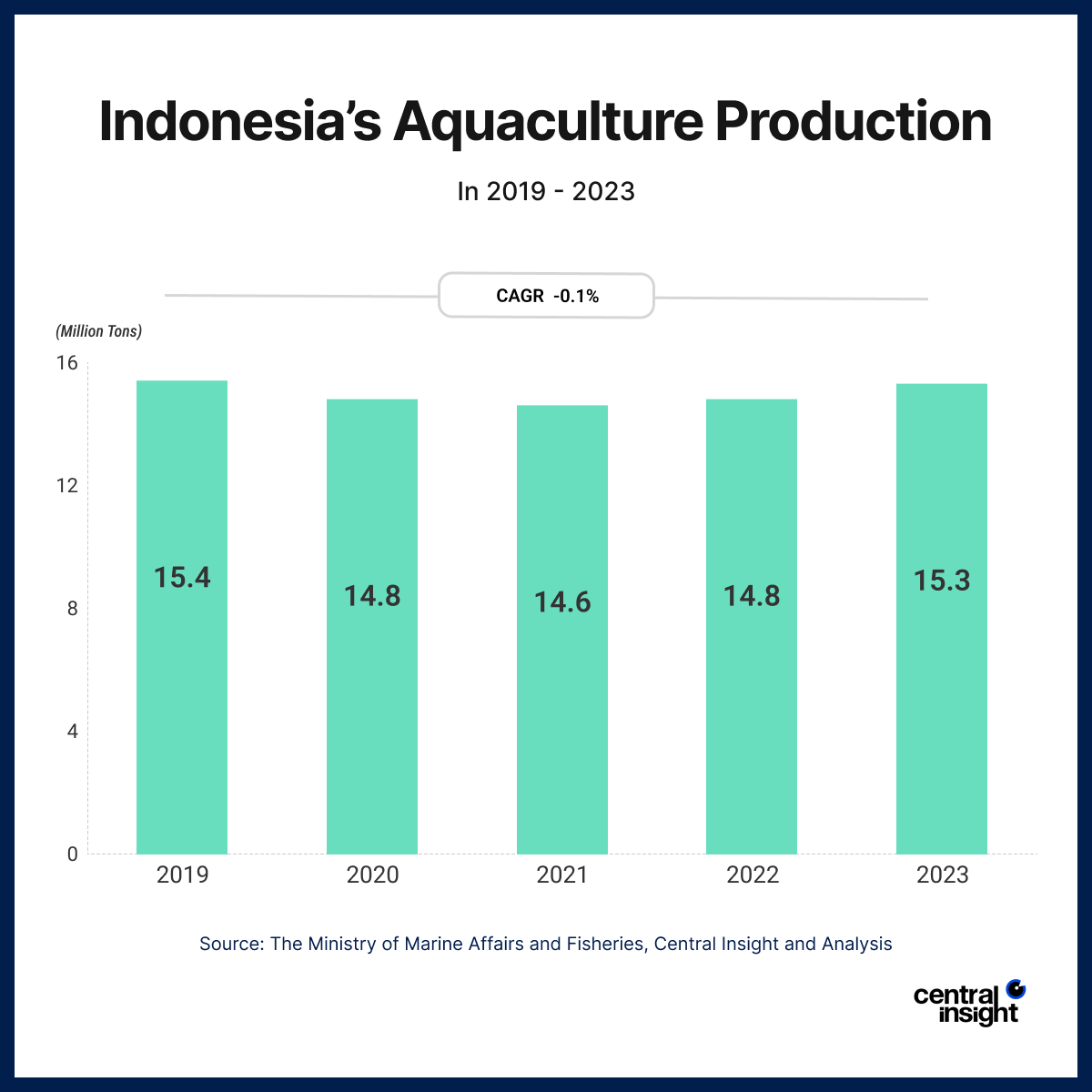Aquaculture has long been a cornerstone of Indonesia’s fishery sector, accounting for a massive 66.3% of total national fish production. Given the country’s expansive water resources, diverse ecosystems, and favorable climate, one would expect this sector to thrive. Yet between 2019 and 2023, Indonesia’s Aquaculture Sector production has declined slightly by -0.1% annually, signaling a worrying stagnation.
Factors Contributing to the Decline in Indonesia’s Aquaculture Sector
The causes of this slowdown are multifaceted. Unstable water sources—driven by erratic rainfall, pollution, and overuse—have significantly affected pond and cage productivity. Many farming regions lack consistent water quality and flow, leading to heightened stress levels in fish stocks and reduced yields.

Rising feed prices are another major concern. Feed often accounts for up to 70% of production costs in aquaculture. Fluctuations in global commodity prices and domestic supply chain inefficiencies have pushed costs beyond what many small-scale farmers can sustain. As margins shrink, businesses are forced to scale back or shut down entirely.
Then there’s the persistent threat of disease outbreaks. From viral infections to bacterial blooms, aquaculture farms—especially those with poor water management—face regular losses due to illness. Limited access to veterinary support and preventive technologies only worsens the problem, especially for smaller operations with minimal capital.
The result? Many micro and small aquaculture businesses have exited the industry altogether, unable to survive financially or adapt to the new normal. This has significant implications for employment, rural incomes, and domestic food security, especially in coastal and inland communities that rely on fish farming.
To reverse this trend, Indonesia must invest in resilient infrastructure, training for farmers, and more efficient technologies. Granted, the stagnation in Indonesia’s Aquaculture Sector isn’t irreversible. However, it demands urgent attention and coordinated action from both government and industry stakeholders.








